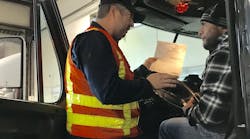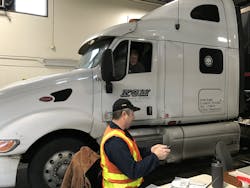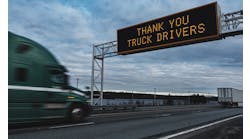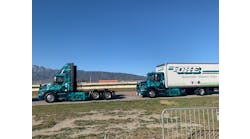On a rainy morning this past January, I had the opportunity to observe ELD-focused inspections of truck drivers along Interstate 5 near Woodburn, OR.
As Abe Dunivin, truck inspection training coordinator with the Motor Carrier Transportation Division of the Oregon Department of Transportation, conducted the inspections I spoke with some of the drivers who had been randomly selected.
My experience showed me there was a high level of confusion with the devices, and in one case the driver was unable to get the ELD to work at all.
Back in January, Dunivin suggested the Federal Motor Carrier Safety Administration (FMCSA) should consider delaying the April 1 “hard enforcement” deadline of ELD mandate, something that did not happen.
Last week, I reached back out to Dunivin to get his updated assessment. He told me that feedback from his team led him to believe most interstate truck drivers are using electronic devices.
In early April there were a number of cases where drivers were caught not using ELDs. They were placed out of service for 10 hours, before being allowed to continue the trip. They were also ordered to get a device installed prior to their next shipment.
The number of these cases in Oregon has declined with each passing week, an indication to Dunivin drivers realize it is too risky to consider not using one.
That does not imply it has been all smooth sailing. Dunivin said the biggest frustration for inspectors is interacting with drivers who do not know whether they are using an ELD or automatic on-board recording device (AOBRD).
He said this information alone would speed the inspection process because it helps guide which rule to follow. He noted there are about 300 different devices inspectors may come across, while each driver has only one to worry about.
“We want to get it done just as fast as you do, but we do have a process we have to go through,” he said. “If you know how to operate the device … the inspection will go smoother for everybody.”
Dunivin also recommended truckers use the telematics option for sending hours-of-service data, and take the time now to learn the transfer process. This could save as much as 30 minutes on an inspection, he estimated.
While imploring truck drivers to take more personal responsibility to learn their devices, he was quick to add inspectors also must continue to play a role to make faster inspections a more regular occurrence.
To that end, the state has scheduled a series of open house events between the end of May and September. Included on the agenda is a discussion of the common issues inspectors are finding during roadside inspections.
One area of confusion continues to be the rule exempting certain agricultural drivers from having to use an ELD. Another point of confusion can be the exemption for truckers using engines older than model year 2000, which do not need an ELD. Without proper documentation, such as a picture of the engine’s data plate, the result could be a slower inspection, Dunivin warned.
It is also likely new problems will continue to pop up. I spoke with Dunivin just days after One20 announced it was ceasing operations, including its ELD smartphone app launched last year.
Dunivin was not yet aware of this development, and suggested if an unsupported ELD was being used, it likely would be considered a malfunctioning device and drivers would be required to provide paper logs until a new one was installed.
Using that as the guideline, he said “if the repairs are going to be longer than eight days, they have to get permission from the feds to run on paper logs. . . . If we apply that standard to a device where the manufacturer has gone out of business, the company has eight days to replace them or will need to get permission from the feds."
While hopefully the industry will avoid a trend of newer entrants to the ELD space going out of business, the timing of my follow-up discussion with Dunivin was a reminder while the April enforcement date may have passed, trucking’s true electronic age is just in its infancy.




